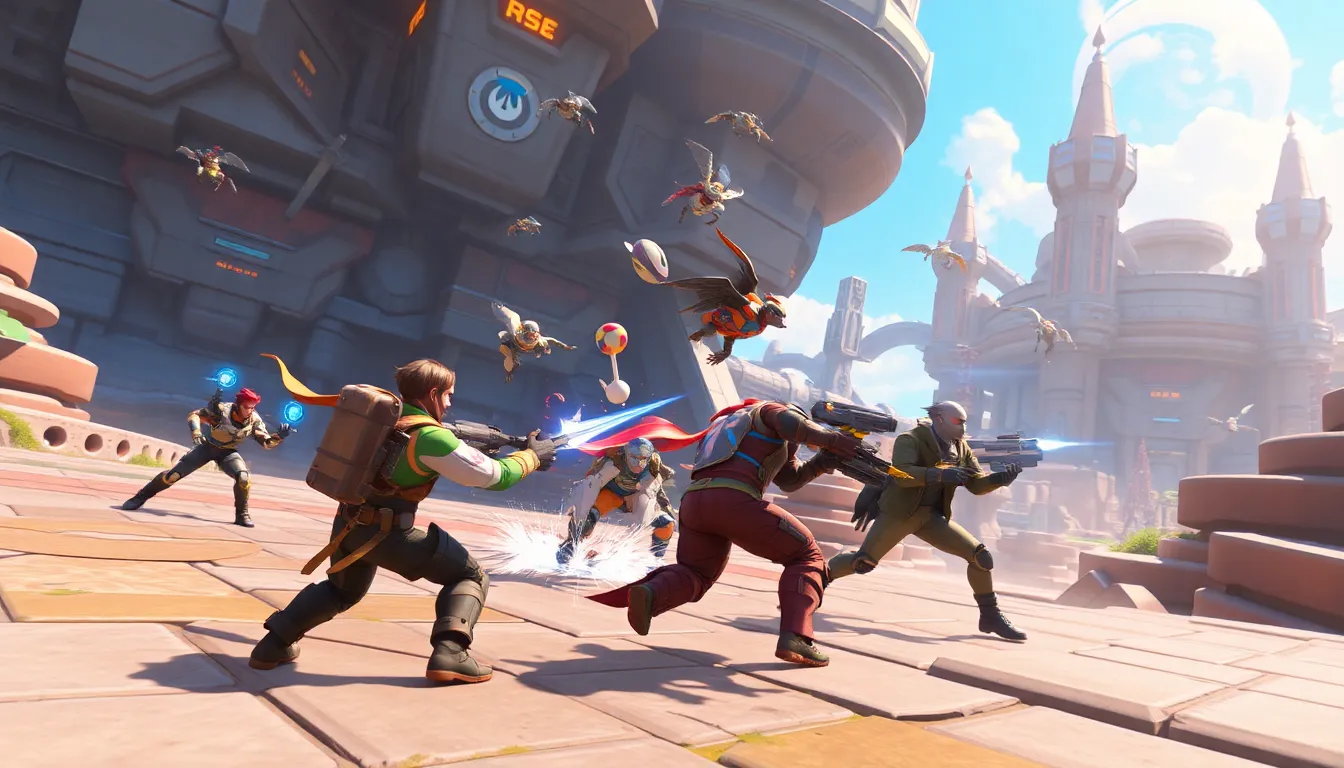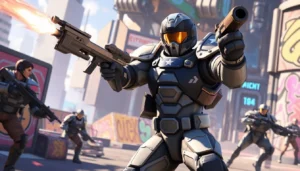Table of Contents
ToggleIn the ever-evolving battlefield of Overwatch, hero reworks are like a fresh coat of paint on a beloved classic. They breathe new life into characters, transforming them from forgotten relics into formidable forces. Imagine Reinhardt, not just swinging his hammer but also tossing out snacks to his teammates—who wouldn’t want that?
Overview of Overwatch Hero Reworks
Overwatch hero reworks significantly impact gameplay dynamics and player engagement. By reimagining existing heroes, Blizzard Entertainment breathes new life into character mechanics and strategies. Players often experience enhanced effectiveness, especially when heroes receive adjustments aimed at improving their playstyle.
Character reworks address gameplay balance issues and community concerns. An example includes major changes to Moira’s abilities, which shifted her gameplay from purely damage output to a more support-focused role. Such adjustments aim to better align hero roles with team dynamics and overall game objectives.
Team dynamics receive a fresh approach with these reworks, allowing players to explore new synergy options. Recent reworks encourage experimentation with hero compositions, which can adapt to evolving meta-game strategies. Enhanced interactions among heroes often emerge, providing richer gameplay experiences.
Feedback from the player community drives many rework decisions. Developers carefully consider player input when identifying heroes needing adjustments. Past reworks highlight how community suggestions lead to innovative solutions, ensuring that heroes remain relevant and fun to play.
Balancing the excitement of new abilities with maintaining core identity becomes a challenge during reworks. Successful adaptations ensure heroes retain their unique characteristics while offering expanded gameplay versatility. It’s this delicate balance that keeps the Overwatch experience fresh and appealing to a broad audience.
Reasons for Reworks

Reworks in Overwatch serve various critical functions that directly impact gameplay and player enjoyment. Core elements include balancing gameplay and enhancing player experience.
Balancing Gameplay
Balancing gameplay remains a primary objective behind hero reworks. Developers analyze character performance data to identify overpowered or underutilized heroes. Adjustments often target abilities that disrupt game flow or skew team dynamics. When Bastion’s transformation ability caused significant imbalance, a rework introduced limitations to restore fairness. These changes ensure that each hero contributes effectively to team strategies, fostering healthy competition and variety in playstyles. Regular updates allow heroes to adapt to shifts in the evolving meta, ensuring consistent engagement.
Enhancing Player Experience
Enhancing player experience is another key reason for reworks. Players often express concerns about stale gameplay or a lack of variety in hero abilities. Reworking characters like Moira can shift focus to more fulfilling support roles, increasing collaboration among teammates. Improvements aim to align hero abilities with player feedback, ensuring each character feels rewarding and enjoyable to play. Fresh mechanics can reignite interest, drawing veterans back and attracting newcomers. Engaging designs also support unique playstyles, encouraging players to explore diverse strategies and team compositions.
Notable Hero Reworks
Hero reworks in Overwatch not only refresh established characters but also reshape gameplay dynamics. Each adjustment aims to enhance player experience and maintain balance within the game.
Bastion’s Transformation
Bastion underwent significant changes to address his overpowering abilities. The rework introduced a new configuration that emphasizes mobility while avoiding static gameplay. Developers adjusted his turret mode, allowing for a greater emphasis on stealth and positioning. This change encourages teamwork by promoting better synergy with support heroes, thereby aligning his gameplay with team objectives. As a result, players now engage with Bastion differently, focusing more on strategic placement rather than bombarding opponents indiscriminately.
Symmetra’s Change to Damage Role
Symmetra transitioned from a support hero to a pure damage role, altering her skill set significantly. The change involved a rework of her turrets, enabling her to deploy them with more versatility and impact. Developers enhanced her beam weapon, increasing its damage output with a focus on rewarding skillful aiming. Players experienced a fresh, dynamic playstyle that encourages aggressive strategies while maintaining her core identity. This rework has led to increased team synergy, as Symmetra can now contribute to damage-focused compositions effectively.
Mei’s Ice Wall Adjustments
Mei’s Ice Wall received adjustments aimed at improving its utility without compromising fairness. The developers modified its height and duration, creating new tactical possibilities in both offensive and defensive situations. Players can use the wall to block projectiles and redirect enemy movements more effectively. This change not only promotes creative gameplay but also enhances collaboration among teammates. With these adjustments, Mei can disrupt enemy strategies while maintaining her identity as a crowd-control specialist.
Impact of Reworks on the Meta
Reworks significantly reshape the Overwatch meta, influencing gameplay strategies and team compositions. Developers analyze character data to identify trends, ensuring reworked heroes enhance team dynamics rather than disrupt them. Bastion’s mobility enhancement transformed gameplay, encouraging players to utilize strategic placement in battle.
New abilities amplify synergy with support heroes. For instance, an updated configuration for Bastion fosters teamwork, allowing for more complex tactics during engagements. Similarly, Symmetra’s shift to a pure damage role allowed for more aggressive strategies while preserving her identity.
Utility improvements also play a vital role in gameplay evolution. Mei’s Ice Wall adjustments created more tactical opportunities, enhancing collaboration among teammates as well. Each rework aims not only to balance gameplay but also to create engaging experiences that resonate with players.
Player feedback drives many changes, reflecting the community’s desire for more diverse gameplay options. Moira’s rework shifted focus to support roles, emphasizing her value in team play. Adaptable heroes create new opportunities, helping maintain interest among veteran players while attracting newcomers.
Team dynamics continuously evolve due to these changes. The introduction of fresh mechanics alongside hero identity fosters adaptability, ensuring heroes remain relevant in a shifting meta. Enthusiastic players often welcome reworks, as they invigorate gameplay and prompt the community to explore new strategies. Overall, the impact of hero reworks forms a crucial aspect of Overwatch’s evolving landscape, nurturing a thriving gaming environment.
Community Reactions and Feedback
Community reactions to hero reworks in Overwatch often highlight a mix of excitement and apprehension. Many players express enthusiasm when their favorite characters receive significant updates, as seen with Bastion’s mobility enhancements. The feedback showcases players’ appreciation for increased tactics and team dynamics.
Players frequently voice their concerns about specific changes. Some feel that reworks alter the essence of beloved heroes. For example, Symmetra’s shift to a pure damage role sparked debate regarding her original support identity. The discussion reflects the community’s deep connection to character lore and playstyle.
Engagement in forums and social media gives developers valuable insights. They monitor comments and reaction threads closely. This feedback loop helps developers understand players’ perspectives on balance and effectiveness, guiding future reworks. Changes that align with player desires often lead to renewed interest in gameplay.
Surveys conducted by Blizzard indicate preferences for certain playstyles and hero roles. Many players advocate for reworks that enhance teamwork and strategy. This highlights the ongoing desire for collaboration among heroes, as evidenced by improvements in characters like Mei, whose Ice Wall adjustments opened new possibilities.
Streamers also contribute to the conversation surrounding hero changes. Their gameplay showcases the impact of reworks, demonstrating both strengths and challenges of revised heroes. Viewers often engage in discussions about optimal strategies and team compositions based on these reworks.
Overall, community feedback serves as a critical factor in shaping hero reworks. Developers leverage this information to refine gameplay dynamics while keeping player satisfaction at the forefront. Continuous dialogue ensures that hero changes resonate positively with the ever-evolving audience.
Hero reworks in Overwatch serve as a vital mechanism for maintaining gameplay balance and enhancing player experience. By reimagining existing heroes developers can address community concerns and breathe new life into the game. These changes not only refresh character dynamics but also foster collaboration among teammates.
The evolving meta ensures that heroes remain relevant and engaging for both veterans and newcomers. With community feedback guiding these transformations developers can create a more dynamic and enjoyable gaming environment. Ultimately hero reworks are essential for keeping Overwatch fresh and appealing to a diverse audience.




